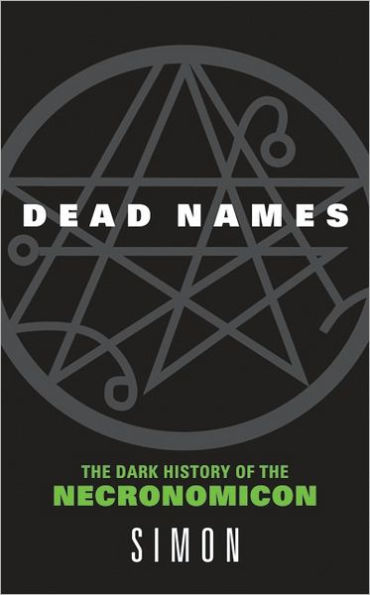The Necronomicon is one of the most controversial books ever published. The master of Gothic suspense, H.P. Lovecraft, wrote about a mystical and dreaded grimoire, known as the Necronomicon––an ancient text written by an Arab that, if it were to fall into the wrong hands, could have disastrous consequences. But no one thought the Necronomicon had any basis in the world outside of Lovecraft's fiction. Until...
Simon was a young man drawn to the mysterious world of the occult through his association with several Eastern Orthodox religions and his friendship with the owner of an occult bookstore in Brooklyn. In 1972 he stumbled upon a stolen text in a friend's apartment, unaware that what he held in his hands was the real Necronomicon––something long thought to be a creation of Lovecraft's brilliant mind and deft pen. After an arduous translation, done in the utmost secrecy (since the tome was in fact stolen), Simon and his close circle of friends unveiled the now–infamous grimoire to a clamoring public.
In Dead Names, Simon tells the amazing true story that surrounds the Necronomicon. From the main players' humble beginnings in the pageantry–filled and secret world of Eastern Orthodox religion, to the accidental discovery of the Necronomicon, to the Son of Sam murders, the JFK assassination , the brilliant William S. Burroughs, and the eventual suspicious deaths of almost everyone involved with the grimoire, this book is an enthralling account of a book steeped in legend, lies, and murder.
The Necronomicon is one of the most controversial books ever published. The master of Gothic suspense, H.P. Lovecraft, wrote about a mystical and dreaded grimoire, known as the Necronomicon––an ancient text written by an Arab that, if it were to fall into the wrong hands, could have disastrous consequences. But no one thought the Necronomicon had any basis in the world outside of Lovecraft's fiction. Until...
Simon was a young man drawn to the mysterious world of the occult through his association with several Eastern Orthodox religions and his friendship with the owner of an occult bookstore in Brooklyn. In 1972 he stumbled upon a stolen text in a friend's apartment, unaware that what he held in his hands was the real Necronomicon––something long thought to be a creation of Lovecraft's brilliant mind and deft pen. After an arduous translation, done in the utmost secrecy (since the tome was in fact stolen), Simon and his close circle of friends unveiled the now–infamous grimoire to a clamoring public.
In Dead Names, Simon tells the amazing true story that surrounds the Necronomicon. From the main players' humble beginnings in the pageantry–filled and secret world of Eastern Orthodox religion, to the accidental discovery of the Necronomicon, to the Son of Sam murders, the JFK assassination , the brilliant William S. Burroughs, and the eventual suspicious deaths of almost everyone involved with the grimoire, this book is an enthralling account of a book steeped in legend, lies, and murder.

Dead Names: The Dark History of the Necronomicon
336
Dead Names: The Dark History of the Necronomicon
336Paperback(Mass Market Paperback)

Product Details
| ISBN-13: | 9780060787042 |
|---|---|
| Publisher: | HarperCollins |
| Publication date: | 03/28/2006 |
| Pages: | 336 |
| Sales rank: | 959,209 |
| Product dimensions: | 4.19(w) x 6.75(h) x 0.85(d) |
